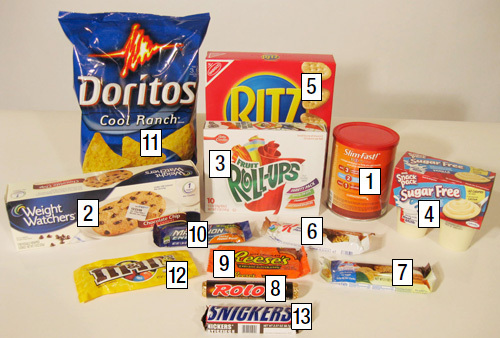This rich Japanese-style broth, flavoured with vibrant fresh herbs, ginger and garlic, peps up firm, white cubes of tofu and long strands of earthy buckwheat noodles. It is a delicious low-fat vegetarian recipe for protein-rich tofu. Serve it for lunch or supper.

Serves 2
Preparation time: 15 minutes
Cooking time: 10 minutes
Ingredients for teriyaki-style noodles with tofu
150 g soba (Japanese buckwheat noodles)
250 g mixed vegetables, such as asparagus tips, broccoli, carrots, cauliflower, green beans or snow peas
100 ml light soy sauce
300 ml vegetable stock
4 tablespoons rice wine (sake or mirin) or dry sherry
300 g firm tofu, diced
2 spring onions, chopped
1 fresh red chilli, seeded and chopped
1 heaped tablespoon chopped fresh mint
1 heaped tablespoon chopped fresh coriander
1 large clove garlic, crushed
1/2 teaspoon grated fresh ginger
2 teaspoons sesame oil (optional)
Preparation for teriyaki-style noodles with tofu
1 Bring a large saucepan of water to the boil and cook the noodles for about 6 minutes, or according to the packet instructions, until al dente.
2 Meanwhile, cut all the mixed vegetables into bite-sized pieces. Add them to the simmering noodles for the final 3–4 minutes of cooking.
3 Drain the noodles and vegetables in a large colander. Place all the remaining ingredients in the empty saucepan and return it to the heat. Heat until simmering, then reduce the heat to the minimum setting. Return the noodles and vegetables to the pan, and cook very briefly until they are reheated.
4 Serve in deep soup bowls, with a spoon to drink the tasty broth and a fork or chopsticks for picking up the solid ingredients.
Each serving provides 2072 kJ, 495 kcal, 30 g protein, 14.5 g fat (1 g saturated fat), 65 g carbohydrate (4.5 g sugars), 5 g fibre
Health tip
Evidence is accumulating from around the world to suggest that eating soybeans and soya products, such as tofu, may help to reduce the risk of certain cancers, heart disease and osteoporosis, as well as helping to alleviate symptoms associated with menopause.
A creamy sauce of zucchini, low-fat ricotta and walnuts reinterprets an Italian classic, and makes a wonderful, sophisticated dressing for baked pasta shells filled with a delicious spinach and bright green herbed stuffing.
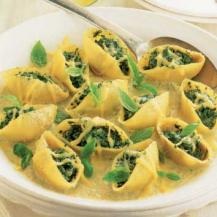
Serves 4
Preparation time: 35 minutes, plus 5 minutes standing
Cooking time: 35 minutes
Ingredients for giant stuffed pasta shells
500 g spinach, trimmed
3 zucchini, thinly sliced
4 cloves garlic, chopped
2 cups (500 ml) vegetable stock
1 cup (250 g) ricotta
1 cup (100 g) walnuts, coarsely chopped
3/4 cup (75 g) freshly grated parmesan
1/4 cup (15 g) chopped fresh chervil or marjoram
1/4 cup (15 g) snipped fresh chives or 3 small French shallots, finely chopped
1/4 cup (15 g) chopped fresh basil
1 egg, lightly beaten
12 no-precook conchiglie grande (giant pasta shells for stuffing)
1/2 cup (65 g) grated edam cheese
2 tablespoons finely shredded fresh basil or tiny basil leaves
salt and pepper
Preparation for giant stuffed pasta shells
1 Wash the spinach well and place the wet leaves in a large saucepan. Cover and cook over a high heat for about 3 minutes, shaking the pan frequently. When the spinach is just tender and wilted, tip it into a colander and leave it to drain and cool.
2 Meanwhile, place the zucchini and half the garlic in a saucepan. Pour in the stock and bring to the boil. Cook over a high heat for about 3 minutes or until the zucchini are just tender.
3 Purée the zucchini and stock in a blender or food processor until smooth, adding half the ricotta, the walnuts, 2 tablespoons parmesan and seasoning to taste. The resulting sauce should have a consistency halfway between pouring and thick cream, slightly more runny than a coating sauce should be.
4 When the spinach is cool enough to handle, squeeze it dry in small handfuls and chop it coarsely. Mix the spinach with the chervil or marjoram, chives or shallots, basil, the remaining garlic and ricotta, the egg and seasoning to taste.
5 Preheat the oven to 190ºC. Use a small teaspoon to stuff the pasta shells with the spinach mixture, then arrange them in an ovenproof dish in a single layer.
6 Pour the sauce over the stuffed shells and sprinkle with the remaining grated parmesan. Cover the dish tightly with foil and bake for 30 minutes.
7 Sprinkle the edam cheese and basil over the cooked stuffed pasta and leave to stand for 5 minutes, uncovered, until the cheese melts, then serve.
Each serving provides 2638 kJ, 630 kcal, 34 g protein, 38 g fat (13 g saturated fat), 39 g carbohydrate (6 g sugars), 5.5 g fibre
Why am I showing you a picture of two starving guys about to bite into
a gigantic (plastic) cheeseburger?  Two reasons: 1. Reason #1: The handsome chap on the right is none other than one of my BEST friends, nutrition guru Joel Marion (I'm on the left). Joel's the nutritional ‘Einstein' that came up with a real, honest-to-goodness, fool proof plan to help ordinary folks drop 25 lbs in 25 days... no matter how many times they may have failed at other eating programs in the past. 2. Reason #2: You really CAN eat foods like real gigantic cheeseburgers on Joel's Xtreme Fat Loss Diet. In fact, eating your favorite foods in large amounts is a REQUIREMENT for the program. (More on that below.) While Joel's new system is all about how to lose fat FAST(up to 25 pounds in 25 days fast), it is NOT a "quick fix", magic-bullet solution. Instead, it's a highly strategic system that incorporates some rather advanced strategies like cheat days, fast days, and depletion days to yield the fastest possible result. To say this a different way, every day of the program you eat a different amount of certain foods. Example, on every 5th day you eat whatever you want. These added calories “trick” your body into increasing its calorie-burning metabolism. Then the next day you trick your body again by reducing your calories (while your metabolism is still burning hot) and burn off a large amount of stored fat at an incredible rate. Want to learn how to eat like this and control the hormones that are causing you to stay overweight? If so, visit this link right away... Learn More About This Sneaky Trick < ===== Click HereNow because Joel and I are great friends I twisted is arm to give you $30 OFF on the entire system until midnight on Thursday. And when you order today, he's also giving away a very special bonus gift that you can learn about on his web site. Now even if you don't plan on getting Joel's program, it's important to visit the link below to discover the #1 reason you aren't dropping weight and what to do about. That alone is worth visiting his web site. How to Lose 25 lbs in 25 Days <------- Your exclusive $30 off invitationMake it a GREAT day! Coach Josh P.S. Don't forget, you get to eat WHATEVER you want every 5th day (no joke). Click below to learn why this is important... Eat What You Want And Still Drop 25 in 25 < ===== Learn How Here
Finding out your type means taking the guesswork out of handling, styling, and treating hair.
By Maui V. Reyes for Yahoo! Southeast Asia
It seems that if you're born with straight hair, you lust after wavy locks. And if you're a kinky-haired babe, you dream of getting straight, tamed tresses. Yes, it's true—the grass is always greener on the other side of your salon chair.
But does that mean you have to change your hair texture? While many women complain that having curly hair can be a pain, the cause of such mess could be the inadequate knowledge of how to work with the kind of hair you were born with. Because believe us when we say that it doesn't matter what your hair texture is—straight, curly, thin, or thick—everyone has bad hair days, and most of them happen because we don't know how to take care of our hair well.
Emmy-award winner and hairstylist Andrew Walker developed a classification system of different hair types to take the guesswork out of handling, styling, and treating hair. Read on to find out how to tame your tresses, according to your hair type. Type 1: Silky straight
It's the hair type most Asians are known for: silky smooth, straight hair that reflects the sun. It seems to be the most resilient type, and if you've ever tried working with a curling iron, you'll know that it's impossible to keep curls with this hair texture. This hair type reflects the most sheen, thanks to its oily texture—which is because oil from the scalp can work its way to the ends without being interfered by curls.
How to give it volume: Unfortunately for straight-haired sisters, their locks lack volume. Because there aren't any curls or waves to take up space on their crowns, straight-haired women feel their hair always lie flat and dull. If you feel like you're stuck in this rut, add some volume by applying a root-lifter product (such as a volumizing mousse) at the roots right after washing your hair. Then, turn your hair upside down, and blow-dry until it's a bit damp. Finish off by brushing from the roots with a round brush, to "lift" up hair.
Type 2: Wavy
Neither super straight nor very curly, Type 2 hair has S-curls that every Victoria Secret supermodel seems to sport nowadays. This unusual hair type can further be classified into three types: fine, thin hair, which is easy to handle and style; medium-textured type; and the thick and coarse wavy hair. The last two types have a tendency to get frizzy.
How to tame frizz: You might want to use anti-frizz products to tame frizz. Your hair can also be easily weighed down by styling products, so use lighter formulas like mousses and sprays. You might also want to shampoo every other day, since too much shampooing can make your hair dry and cause it to become even more frizzy!
Type 3: Curly
Type 3 hair may look straight when wet. But as it dries, you'll notice it slowly going back to its curly state. It has a lot of body and bounce, and can easily be styled while in its natural state. In fact, healthy Type 3 hair is shiny, with smooth curls and strong elasticity. The curls are beautifully well-defined and springy. They are also climate-dependent, and damage-prone.
Too much humidity can cause curly hair to frizz, making you look like you stuck your finger in an electric socket. Plus, oil isn't able to reach the ends of your hair, with curls obstructing the way…this leaves you with dry hair.
How to keep the frizz down: Try to keep frizz down to a minimum by shampooing once or twice a week—more than that could strip your hair of its natural oils, leaving it dry and prone to breakage. Use emollient-rich shampoos and conditioners, and consider running a wide-toothed comb through your hair when applying conditioner for even distribution. Apply a leave-on conditioner after rinsing your hair, and never, ever rub your hair with a towel—the friction will only cause more hair damage and frizz.
Air-dry your hair and apply an anti-frizz serum and moisturizing gel while hair is still damp. If you're looking at using hair styling products, keep them to a minimum, often giving your hair a "time-out" in between: styling products can deplete hair of natural oils.
(More tips on how to learn to love and live with your curls)
Type 4: Kinky
Think Macy Gray's 'fro is super tough? Think again. Type 4 hair, or kinky hair, may look super strong and durable, but it's actually the most fragile type of hair. This type of hair looks wiry, but each tightly-coiled strand has fewer cuticle layers, making it more prone to damage than any other hair type. It's also the driest hair type.
Many people think kinky hair doesn't grow as fast as straight or wavy hair, but it actually grows at the same rate…but since it's so much more drier, hair tends to be prone to breakage, making it seem like it didn't grow. Plus, Type 4 hair shrinks up to 75% of its actual hair length, making it look like it hasn't been growing in length!
How to fight dryness and breakage: Type 4 hair is fine and fragile, so treat it with as much care as you would a super expensive cashmere sweater: cleanse and detangle softly, and avoid harsh chemicals! Use a creamy, sulfate-free moisturizing cleanser on your hair once a week (washing your hair more than once a week will strip it of natural oils) followed by a super hydrating conditioner. Apply a leave-on conditioner to make detangling easier, and apply pomade to seal in moisture. Avoid using mineral oil, petrolatum oils, and heavy waxes—these will only weigh down your hair.
If you want to style your hair, pick styling butters that have conditioners and moisturizers. Detangle your hair with a special detangling brush, since combs and brushes will only cause more tangles and could break your hair. Lastly, reduce tangles by sleeping on a satin pillow or using a satin head wrap. source: http://ph.she.yahoo.com/blogs/teen-life/hair-type-025326015.html
Drinking water
While we are probably all familiar with the advice to drink eight glasses of water a day, more recent research has suggested that there is actually no scientific evidence supporting this recommendation and that drinking excessive amounts of water can actually be dangerous by lowering the concentration of salt in your blood. Health-conscious water drinkers should also be wary of the trend for drinking bottled water, as studies have suggested that the chemicals (phthalates) from plastic bottles can leach into water and disrupt hormone levels.
Talking over your problems
Talking through your problems can be a great way to gain some perspective and get things off your chest. However, studies have suggested that, after a certain point, rehashing and dwelling on problems can actually be bad for your health. According to research, revisiting and analyzing the same problems with friends (“co-rumination”) can lead to anxiety, stress disorders and depression. Next time a problem arises, by all means talk it over with a friend, but try to focus on problem-solving rather than simply dwelling on the issue.
Sipping on mocktails
You may think that by swapping cocktails for mocktails you are doing your health a favour, but this may not actually be the case. While cutting down on alcohol is beneficial for your wellbeing, mocktails are often high in refined sugar which research suggests is just as damaging and addictive as alcohol. For a safer swap and a shot of nutrients, make sure you stick to mocktails made from pure fruit juices instead of those made from syrups.
Early morning workouts
While a daily workout is great for your health, studies suggest that getting up for early morning exercise may not be as ideal as it seems. A study by a researcher from Brunel University, Middlesex, found that heavy training sessions early in the morning can compromise the immune system and put athletes at increased risk of bacterial and viral infection. While a morning jog or gentle exercise session is unlikely to put you at risk, it may be better to save heavier workouts for later in the day.
Taking nutritional supplements
We all know that vitamins are good for us, but relying on nutritional supplements can actually be bad for your health. Separate studies have shown that high doses of vitamin supplements including iron, magnesium and vitamin B6 raise the death rate of older women, while taking vitamin E can increase men’s risk of prostate cancer. While certain people may be required to take vitamins (those with low levels of vitamin D, for example, or vegans who may be deficient in vitamin B12), for most people a better approach is to opt for a varied diet full of fruit and vegetables which will give you all the nutrients you need.
Slathering on sunscreen
Official advice for many years has warned about the dangers of skin cancer, causing many of us to take measures to cover up in the sun at all times. However, while it is extremely important to protect your skin, experts have more recently advised that little and frequent sun exposure is good for us, preventing vitamin D deficiency, which can lead to rickets, osteomalacia and depression. Official advice in the UK, where rickets has recently made a comeback, is to spend 10 minutes in the midday sun without sunblock each day before covering skin up.
Switching to low fat foods
When getting started in healthy eating, it is tempting to opt for low fat foods in order to help keep off excess pounds. However, cutting out ‘good’ fats such as omega-3 fatty acids could be detrimental to your health. Omega-3 fatty acids, found in oily fish, walnuts and flaxseeds, not only help to keep skin supple and wrinkle-free, they are also essential for good brain and heart health and can help prevent arthritis.
Source: http://ph.she.yahoo.com/7-good-habits-bad-health-090000188.html
About 90% of Americans shampoo daily. One hundred years ago, people only washed their hair monthly, and in the 1950s, it was customary for women to have their hair washed and set once a week at the salon.  A clean head of hair feels fresh and smells great but over-washing can turn one's healthy locks into a pile of straw. The average person's hair grows less than half an inch per month so long strands that have been subjected to a lot of shampooing (as well as chemical treatments, blow drying, and the elements), tend to get dried out and dull at the ends and even break off. Dirtier hair-gasp-also holds a style better. How often you need to shampoo depends on how oily your scalp is and your hair's texture. Oil-known as sebum-travels more easily down smooth, straight hair, making it look greasier faster. Sounds a little gross, but sebum helps moisturize and waterproof the hair shaft. This is one reason why curly or coarse hair is drier. When you wash every day, you typically strip off this natural moisturizer and then have to slather it back on in the form of commercial conditioner. Joe Murray, owner of Hale Organic Salon in New York City, tells Yahoo! Shine that shampooing a couple of times a week is plenty. "If you can't stand a being a little oily, then coat your wet hair with conditioner up to the ears to protect it and then just wash the scalp." On gym days, try simply rinsing with water instead of shampooing and finish with a light conditioner to detangle. Another tip Murray offers is to "spot clean around the hairline with a little dry shampoo. It will also help stretch the time between blow outs." Shampooing does stimulate the scalp, which brings blood flow and healthy nutrients to the hair follicles. As an alternative, Murray is a fan of a gentle daily scalp massage and regular brushing with a good quality hairbrush. People with flaky scalps may be inclined to shampoo frequently, but dermatologist and spokesperson for the American Academy of Dermatology, Nia Terezakis, MD says this can actually exacerbate the problem. "When you have a flaky scalp its not dirty, its dandruff or a form of psoriasis," she explains to Yahoo! Shine. "Use a shampoo formulated for dandruff and let it sit on your scalp for 20 seconds before rinsing." You can follow up with a separate shampoo and conditioner of your choice, "But don't scrub," she advises. "It will flake even more." When you choose a shampoo, Terezakis says to pick a product that is made for your specific hair type whether it be oily, dry, limp, curly, etc. "Companies spend a lot of money on cosmetic chemists and different products really do work." One exception: "Baby shampoos aren't necessarily gentle on adult hair," she warns. "They are made because babies squirm. They don't sting the eyes but they can be drying." If you are used to washing your hair daily, it can take a few weeks to get used to a new routine. You may be over producing sebum to compensate for stripping the scalp. Gradually increase the days between shampooing and see if your hair becomes healthier and takes more time to appear dirty as a result. Source: http://shine.yahoo.com/beauty/often-wash-hair-222900620.html
BY COACH JOSH
- The first thing that may strike you as strange in this photo is the Slim Fast drink mix. You may be wondering why this Slim Fast product is along with the other “bad snacks.” Well, if you look at the ingredients the very first ingredient in this product is sugar! In fact, this “weight loss drink” has 10g of sugar, just 2g of protein and is stuffed full of artificial sweeteners, artificial flavors and very questionable ingredients if you are interested in losing belly fat.
- The next thing I would like to point out is the Weight Watchers chocolate chip soft cookies. Their first ingredient is enriched wheat flour, and the second ingredient is sugar, but this supposed “health product” also contains partially hydrogenated oils/trans fats which research has shown has all sorts of negative effects in the body, including increasing the risks for certain cancers.
- Betty Crocker’s Fruit Roll-Up product is a hoot. Many parents across America are giving this product to their children thinking that because it has the word fruit in the name of the product it is healthy, but it’s not. This product contains 7g of sugar per roll, but even worse is that it contains partially hydrogenated oils, corn syrup and a lot of food dyes. You would be way better off providing fresh fruit to your child instead of one of these “belly fat bulgers.”
- Hunt’s Sugar Free Gelatin may sound great because it is low in sugar, but it contains artificial sweeteners and hydrogenated oils (trans fats).
- Ritz Crackers contain partially hydrogenated oil, high fructose corn syrup and enriched flour which make them a very unhealthy product. Doritos Cool Ranch potato chips contain MSG, which is definitely not at the top of my list of ingredients to get a slim belly.
- Special K “candy bars” contain sugar and partially hydrogenated oil as their first two ingredients. And later on down the label, they throw in high fructose corn syrup as a kicker. Stay away from this bar for sure. Not to mention that it has 3.5g of saturated fat. What is ironic is that the Snickers candy bar has almost the same ingredient profile as the Special K protein meal bar.
- The Atkins Advantage chocolate peanut butter bar has almost 6g of saturated fat and 12g of fat overall, plus they pack 240 calories in this little bar that won’t satisfy your hunger for long.
- Rolo chewy caramel candy contains both high fructose corn syrup and hydrogenated oils (trans fats).
- Reese’s Peanut Butter Cups contain a whopping 13g of fat and 20g of sugar per package.
- Snicker’s Marathon Energy Bar contains high fructose corn syrup.
- Cool Ranch Doritos are not cool because they have MSG and partially hydrogenated soybean oil (trans fat.)
- Each bag of peanut M&M’s contains 25g of sugar! Like most candies, these are not a good choice.
- The Snickers candy bar contains partially hydrogenated soybean oil (trans fat) and 20g sugar.
Source: Belly Fat Free
Another year, another attempt to lose weight? Sounds like it’s time to ditch that old diet and try these top new fat-shifting tips instead
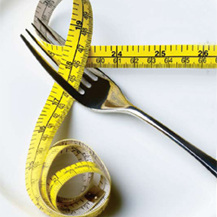 Once upon a time, staying a healthy weight was easy. It could be summed up by the phrase “calories in equal calories out”. To lose weight you simply had to practise the reverse of home economics – spend more than you earned. Unfortunately for many, but perhaps not surprisingly, it turns out that people are rather more complicated than bank accounts.
A lot of research has gone into unravelling the intricacies of our personal fat accounts – driven by the dream of winning the billion-dollar prize of an effective fat pill. Some of the findings have been, to put it mildly, counter-intuitive. They also suggest whole new ways of dieting.
To stay a healthy weight, you need a hormone called leptin to work properly. It sends “I’m full” messages from the fat cells up to the brain, where they go, among other places, to the same pleasure centres that respond to sex and drugs like cocaine. Obese people produce plenty of leptin, but the brain doesn’t seem to respond to it properly. Last year, researchers at the Oregon Research Institute scanned the brains of overweight people and found their reward circuits were underactive. They were eating more to try to get the enjoyment they were missing. In other words, the study showed that fat people are actually the opposite of greedy – because they get less pleasure from eating than others do.
There’s a lot of evidence for the fact that most, if not all, of us have a set point around which our weight can vary by about seven to nine kilos, but anything beyond that is a real struggle. This goes for naturally thin people trying to gain weight as well. Making changes is hard, particularly if your body is working against you, because – as the leptin example shows – the whole weight control system is intimately interconnected with our pleasure centres.
So if your body is sabotaging your efforts to lose weight, why not ditch the traditional approaches and try some new methods, based on the latest research, that work with your body rather than against it . . .
The eat-every-other-day diet
Of course you can still follow the well trodden route of cutting calories, and by sticking to around 1500 a day you will lose weight. Other upsides are that the kilos will stay off and that you will become very healthy: the risk of all the big killers – heart disease, cancer, diabetes – will plummet, along with that of allergies, asthma and infectious diseases. The downside is that you will be constantly hungry and miserable. But what if you could get all those benefits without being in a permanent state of semi-starvation?
Well, maybe you can. The trick is to try an “alternate-day” diet. Several years ago researchers at the National Institute on Aging in Baltimore reported that when they gave rats very little food one day and allowed them to eat plenty the next, they showed virtually all the benefits of a permanent calorie restriction diet. The same goes for humans, according to Dr James Johnson who has set up a website with information on how to do it. (johnsonupdaydowndaydiet.com).
How does it work? Besides forcing the body to burn fat, it may also trigger hormonal changes, such as ramping up the activity of two anti-ageing genes called SIRT3 and SIRT4. Most people say that the diet takes a bit of getting used to, but is not as grinding as trying to cut back on an everyday basis.
Just-published research from the University of Illinois at Chicago of a ten-week trial on obese patients who followed a form of the alternate-day diet revealed a weight loss ranging from four to 13 kilograms, whereas the researchers expected an average of only two kilograms. Blood pressure, heart rate and cholesterol were also lowered.
Keep cool
Older dieters may remember some-thing called brown fat. Unlike the undesirable white stuff, this was a dieter’s dream. Instead of storing excess energy as fat, brown-fat tissue burned it off to keep you warm – at least in mice. Brown fat fell out of favour because researchers couldn’t find much in humans but now, thanks to the New England Journal of Medicine, it’s back in fashion. The idea is to expose people to cold temperatures. They then make more brown fat and their weight drops. Women kept at 22˚C used up 27 more grams of body fat a day than those at 27˚C. So turn on the air-con.
Here are a few simple ways to enjoy the sweet treats of the holiday season without overindulging.
 Have an iced cupcake instead of a slice of frosted cake. Calories saved: 100
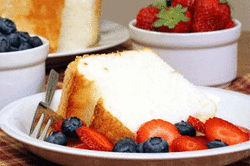 Top angel food cake with fruit instead of 2 tablespoons of chocolate syrup. Calories saved: 100
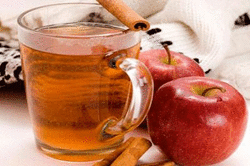 Instead of a cup of eggnog during the holidays, have hot apple cider with a cinnamon stick. Calories saved: 100
 Serve ice cream in a dish instead of a waffle cone. Calories saved: 50.
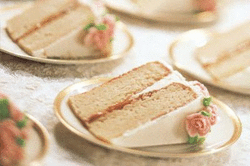 Enjoy cake — just scrap off the icing. Calories saved: at least 100.
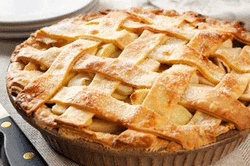 Pie? Have a slice of apple lattice instead of a serving of apple crumb. Calories saved: 70.
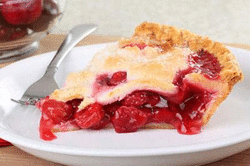 hold the ice cream on the pie; opt for a plain piece of fruit pie instead. Calories saved: 75-100.
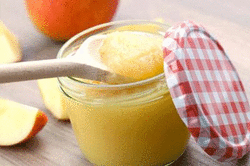 When baking, if your recipe calls for 1 cup of sweetened applesauce, use unsweetened instead. Calories saved: 50.
 Share your serving of chocolate cake and buttercream icing with someone special. Calories saved: 115.
By Registered Dietitian Laura CaJacob While statistics on holiday weight gain are inconsistent, one thing is for sure: the holiday season makes normally healthy habits much more difficult. The mashed potatoes get passed one extra time around the table, and the chocolate peppermint brownies stare at you all day from your desk. More than anything, holiday eating is challenging because we are surrounded by a sea of indulgent dishes. Just like Coach Josh says on p.164 in his book, Belly Fat Free, “You’re only setting yourself up for failure if you start an eating program that forbids you from ever eating your very favorite foods.” You don’t have to jump off the wagon over the holidays in order to enjoy your favorite foods. There are a variety of recipe substitutions that can keep you on track toward reaching your goals. Rather than skip your favorite dish entirely, why not lighten it up a little? Before we get started, I must make a few notes as a lover of food, tradition and flavor: - I know it can be a sin to alter an all-time favorite family recipe. Leave Aunt Jane’s famous candied yams alone, and try changing some dishes that aren’t the one thing you look forward to in December. Who knows – you may add a new recipe into the regular rotation!
- Don’t you dare try to eliminate every unhealthy ingredient in a recipe. The intention of modifying a recipe is not to create cardboard. As Coach Josh declares on p.174 of Belly Fat Free, “Remember—love the food you eat or you won’t stay on the program for long!”
Below is a list of five simple ways to adjust some holiday recipes without sacrificing flavor. 1. Substitute unsweetened applesauce for oil.This works great in baking desserts to lower the fat content. The substitution ratio is 1:1, and the result is a moister, sweeter dish. This even works with boxed mixes. Note: Do not try this with butter. Chocolate chip cookies turn into chocolate chip pancakes. 2. Increase vegetables.There are so many dishes that could have more flavor, texture and color by adding some extra veggies. Try using more roasted root vegetables in a stuffing than bread. Throw leeks and mushrooms into a wild rice side dish. Generously add a variety of vegetables, and your belly will thank you. 3. Replace mild cheese with half the amount of strong cheese.You flat out can’t eat as much blue cheese or parmesan as you can mozzarella or mild cheddar. By using less of stronger cheeses, you can drastically reduce fat and calories while actually increasing flavor. This works great for cheese plates, salads and melting cheese on vegetables. 4. Substitute pureed vegetables for cream.Zucchini, squash and cauliflower are excellent choices for thickening soups without changing the flavor. Simply peel and roast the veggies then blend until you have a “creamy” puree. Add as a thickener until you get your desired consistency. Note: Be mindful of the color vegetable you chose as this can really affect the soup’s appearance. We eat with our eyes first, and nobody wants to eat green cream of corn soup. 5. Reduce sugar by 25%.There is usually so much sugar called for in most recipes that nobody will notice the 25% that goes missing. If your recipe calls for 1 cup sugar and you use ¾ cup, you cut out 200 calories just like that. Consider this when using syrups, honey, or jams as well. I challenge you to try some of these recipe modifications. I wouldn’t be surprised if you like the healthier version better than the original. P.S. I never even considered tip #3 and #4… did you? Source: Belly Fat Free by Coach Josh
|






